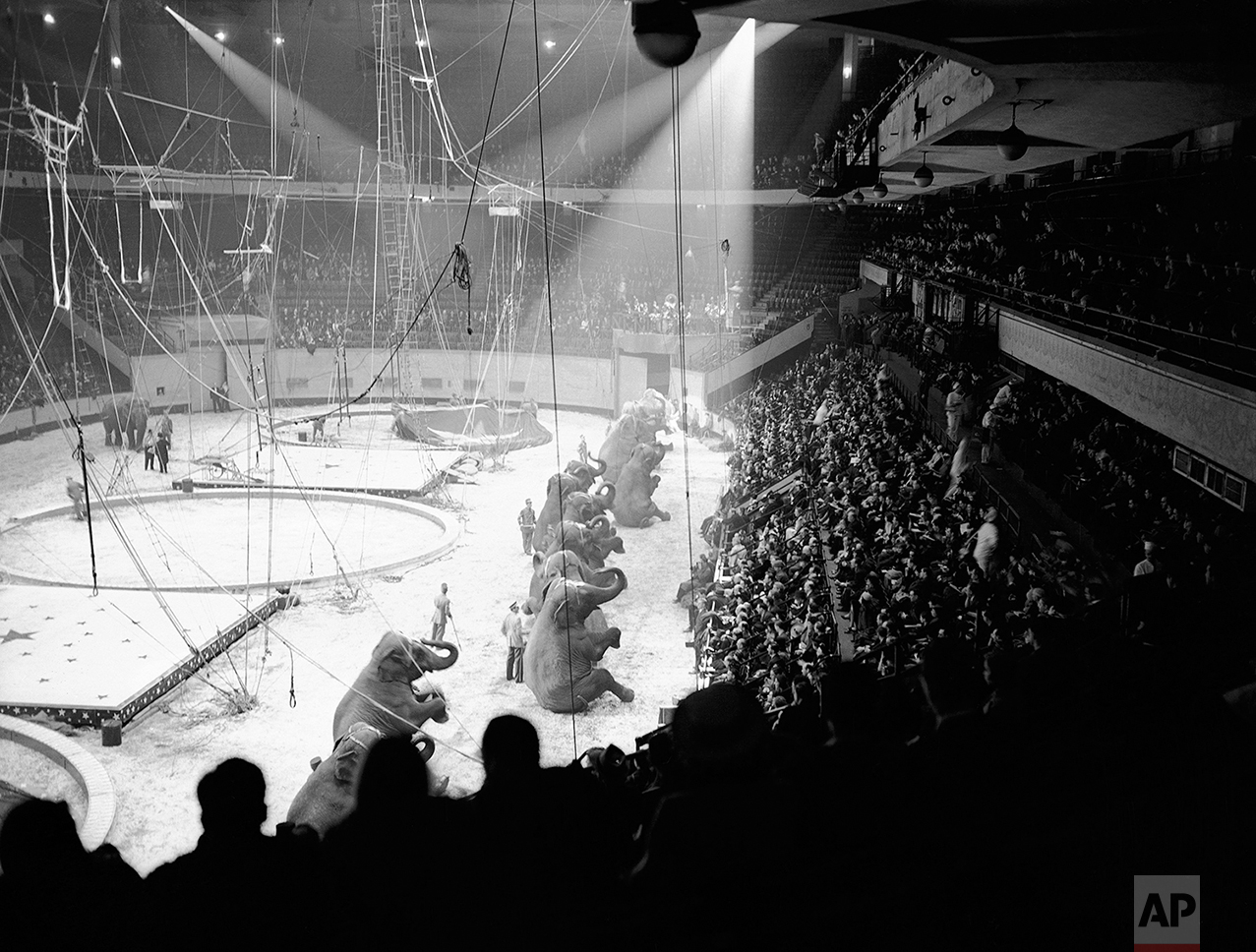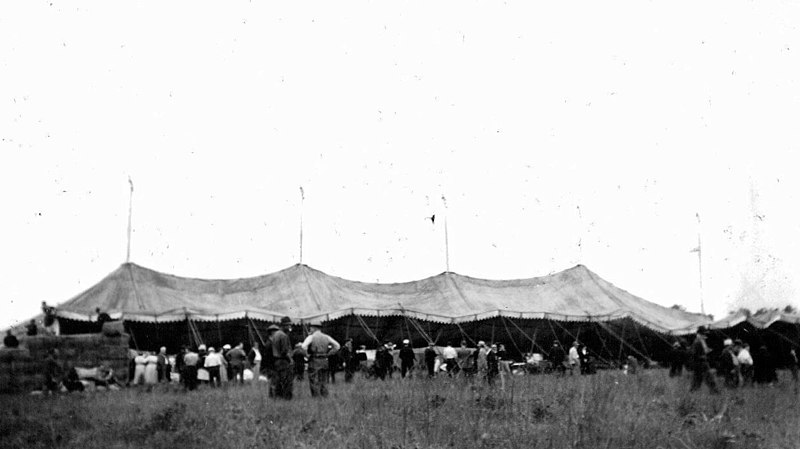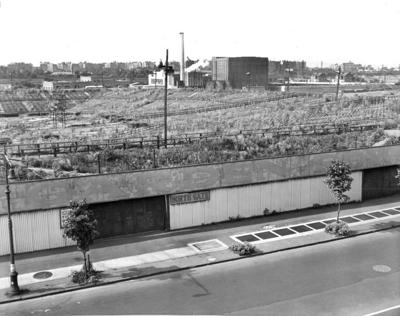Eeny, meeny, miny, moe
Catch a tiger by the toe
If he hollers let him go,
Eeny, meeny, miny, moe
Many of my readers have asked me how I find all the stories posted on the Hatching Cat. I discover most of my animal tales in the pages of old newspapers. Sometimes, however, one of my readers leads me to a great story.
The following big-cat story came to my attention during my recent correspondence with Bob Singleton, executive director of the Greater Astoria Historical Society. When Bob mentioned that a tiger once escaped from a circus in Woodside, I just had to dig more into this tale.
The Tiger Escapes

On May 8, 1939–34 years after 10 elephants terrorized the Woodside neighborhood after escaping from the Ruhe Wild Animal Farm–a 400-pound tiger named Colonel (or Duke) escaped from his wooden crate near the Madison Square Garden Bowl on Northern Boulevard in Woodside, Queens.
According to the Brooklyn Daily Eagle, the escape took place at about 5:30 a.m., while the cage was being unloaded from a railroad car to the circus lot. The entire Ringling Brothers, Barnum & Bailey Circus, including a large menagerie and about 2,800 performers, had traveled to Queens in 80 railroad cars for the one-week engagement.
Ringling Brothers had opened its 1939 season in April with performances at Madison Square Garden in Manhattan. In Queens, the circus selected a lot adjacent to the Madison Square Garden Bowl on Northern Boulevard at 45th Street to erect its big top.



It’s not clear whether the tiger was actually with the circus, or if he was even scheduled to perform with the circus. According to The New York Times, the tiger was being shipped to Frank Buck’s jungle camp in Massapeaqua, Long Island. During the night, he chewed through the wooden slats and then slammed his way out of the weakened timber crate.
At approximately 5:35 a.m., a milk truck driver called police headquarters. “Do believe me. I have not been drinking,” he reportedly said. “But I have just seen a tiger. Three men are after it.”
Radio police cars from the Hunter’s Point Emergency Squad and Astoria police precinct responded immediately to the scene of the escape. They joined Roy Chorister, who worked with the tigers and was thus the best man to lead the search team.
As they made their way down Northern Boulevard, Chorister begged Sgt. James Sullivan and the other policemen not to shoot the tiger with their rifles. He assured them that he would be able to get Colonel back in his cage without trouble.
The Tiger is Captured
It did not take long for the men to capture Colonel, but the details vary, depending on the newspaper.
According to the Brooklyn Daily Eagle (which called the tiger Duke), the men found the tiger in a lot behind the Woodside car barns (New York and Queens Railroad Company trolley barn). On page two of the Daily News, it was also reported that Chorister and the police found the tiger “peacefully wandering about behind the Woodside car barns.”

However, in the same edition of the Daily News, on page 27, the photo captions state that the men captured the tiger in the backyard of 38-29 Woodside Avenue, which was a private residence. Maybe the tiger spent some time checking out the trolley barn before heading over to Woodside Avenue.
Several out-of-state newspapers said it took about 60 men armed with nets, poles, and guns to capture the tiger. The New York Times reported that the tiger was captured after he leapt onto a tree behind a two-story brick house at 38-23 53rd Street.
On May 14, five days after the great escape, the Brooklyn Daily Eagle reaffirmed that the tiger had made his way about six blocks east down Northern Boulevard and a few blocks south over the railroad tracks to the backyard of Woodside Avenue. “The tiger’s gone in the driveway at 38-29 Woodside Ave.,” came a police report at 5:45 a.m.

The noise of the tiger’s roars and the men’s shouts woke the occupants living in the house–Mr. Agoston (Gus) Mazzari, his wife, and five children.
Mr. Mazzari told the reporter that although the family was surprised by the rude awakening, they were not in the least afraid. After all, he told the newspaper, it was only one tiger.
The day after the escape, the circus opened in the first air-conditioned big top in history.
(By the way, the Brooklyn Daily Eagle got it right and The New York Times was wrong: According to the 1949 federal census, Agostin Mazzari lived at 38-29 Woodside Avenue, not on 53rd Street.)



The Madison Square Garden Bowl
Although the Ringling Brothers, Barnum & Bailey Circus took place in a big tent, the tent was pitched next to the Madison Square Garden Bowl.
Located between 45th and 48th Streets and Northern Boulevard, this large sports arena was the folly of boxing promoter George L. “Tex” Rickard, who founded the New York Rangers. Ground for the 72,000-seat arena was broken in 1929—the year Rickard died—and it was completed in 1932.

The arena primarily hosted circuses and boxing matches; something called midget auto racing also took place there. It was here, in fact, that James J. Braddock defeated Max Baer for the World Heavyweight title on June 13, 1935—a fight later featured in Cinderella Man. During the winter months, the snow-covered bowl made a great place for children to go sledding.

The Madison Square Garden Bowl was torn down in 1942-43 to make way for a US Army Mail Depot. Metal from the stadium was melted down to make bullets and other war materials, including those to build the mail facility. The depot was torn down in the 1960s, and the area is now occupied by car dealerships and a strip mall.

Kangaroos and Tigers
Incidentally, a baby kangaroo escaped from the Prospect Park Zoo in Brooklyn on the same day that Colonel the tiger escaped in Queens. The kangaroo was found hopping along Eastern Parkway.
More than 60 years later, in August 2004, a Bengal tiger named Apollo escaped from the Cole Brothers Circus in Forest Park and caused a multi-car accident on the Jackie Robinson Parkway. This tiger was also captured safely and returned to his cage.




I loved these stories, especially this part: “Mr. Mazzari told the reporter that although the family was surprised by the rude awakening, they were not in the least afraid. After all, he told the newspaper, it was only one tiger.” So brave and yet so pragmatic!
As always, another good and fun story. Thank you for the differing “facts” as well.